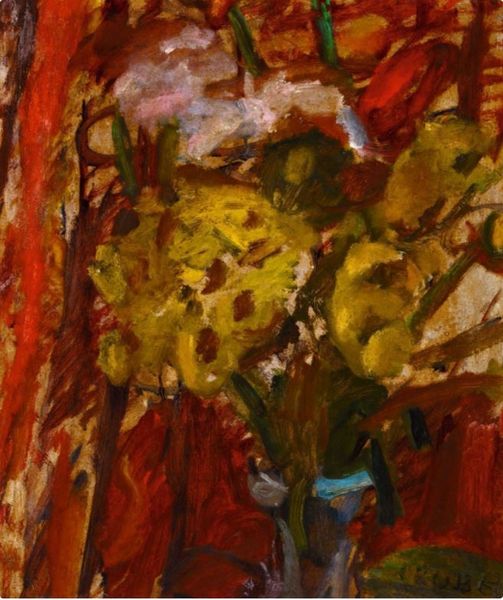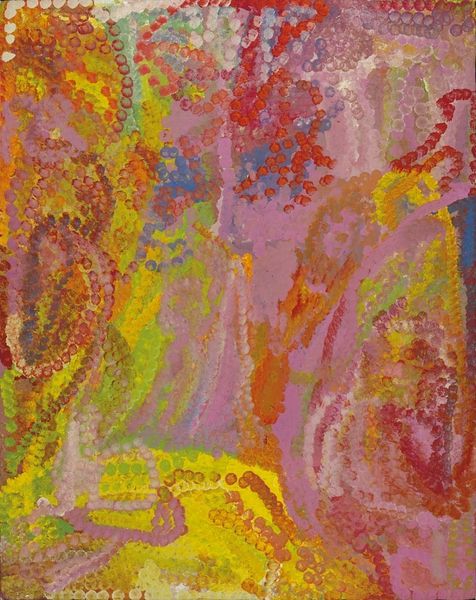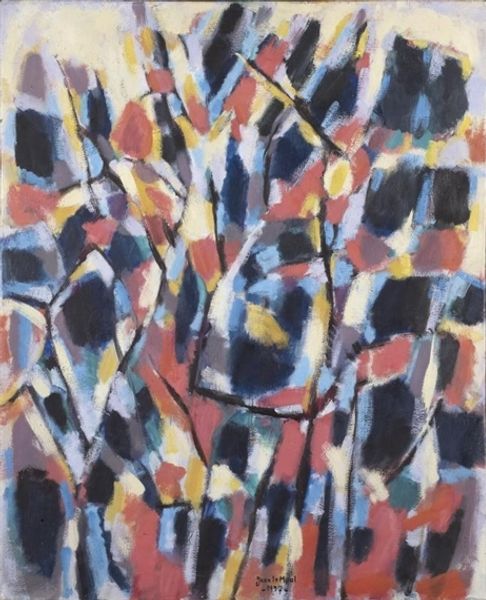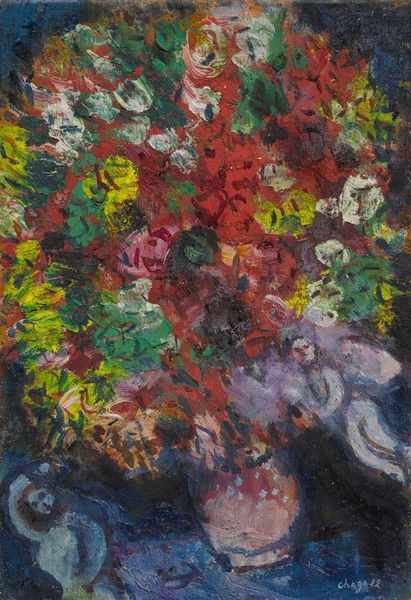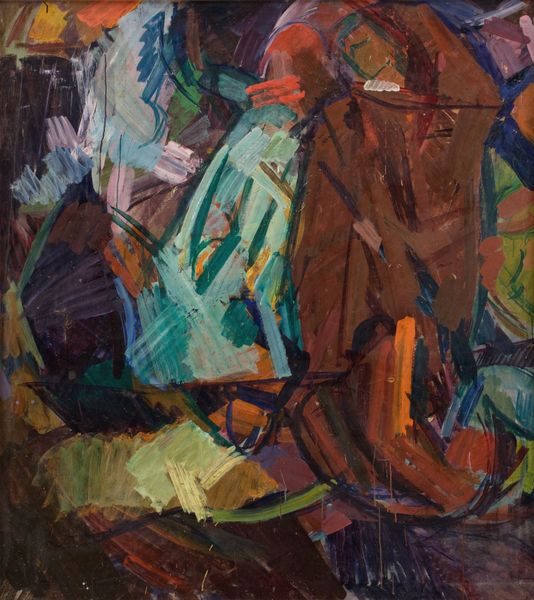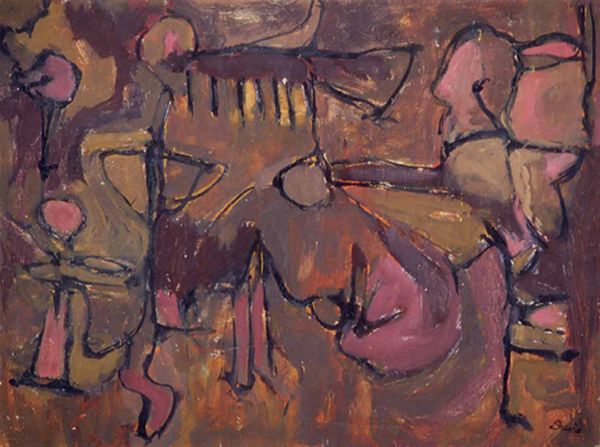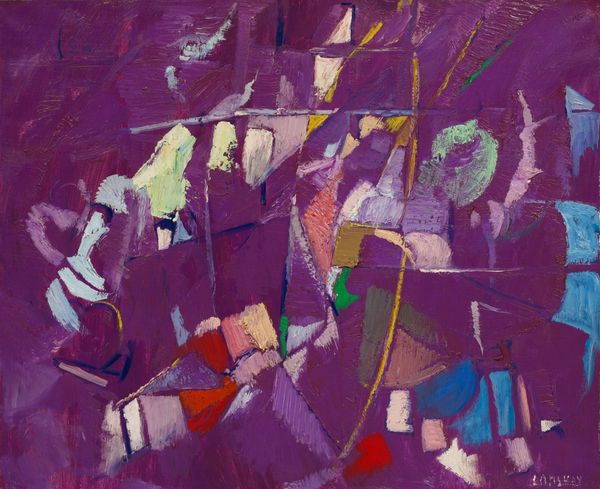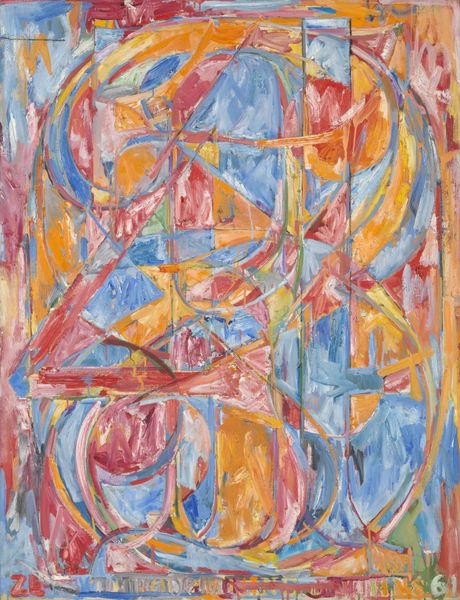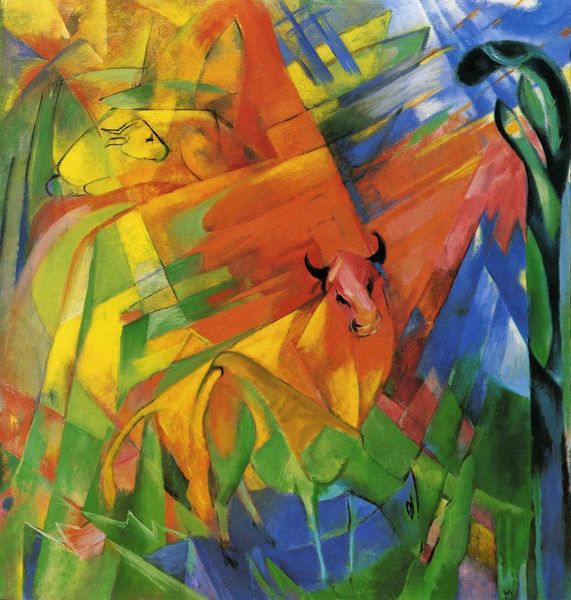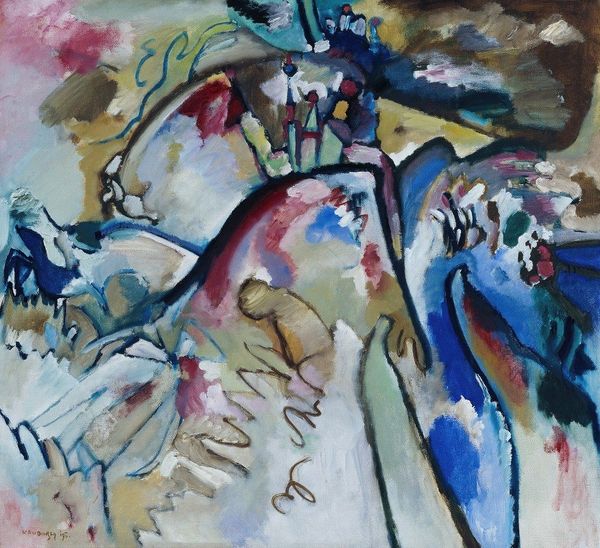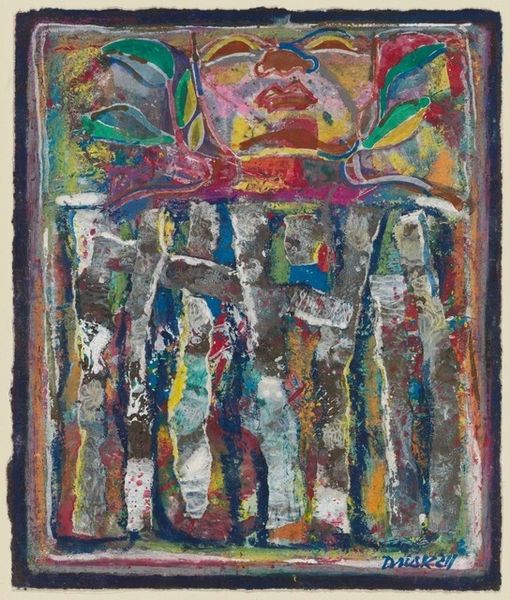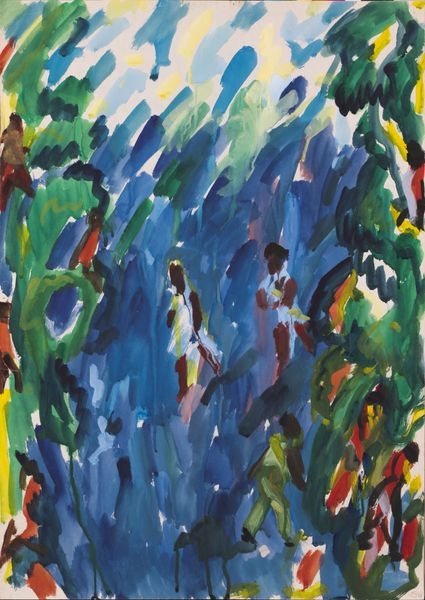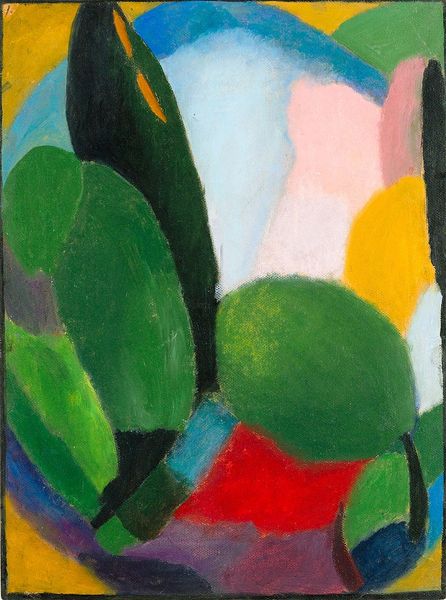
Copyright: Public Domain: Artvee
Editor: We're looking at Paul Klee's "Kakteen," painted in 1912 using oil paints. It has such an intriguing composition and feels like the artist has really expressed themselves! How would you interpret this work? Curator: The vibrancy you observe speaks volumes. Klee's embrace of Fauvist and Expressionist styles around this time was a deliberate move away from traditional representation. The visible brushstrokes, bold colours, and distorted forms serve a purpose beyond mere depiction. How do you think the cactus as a subject functions within this politicized visual landscape? Editor: Hmm, I hadn’t really considered the political angle...I suppose the cactus might symbolize resilience, perhaps? Like it can thrive in harsh conditions. Curator: Precisely. The cactus, thriving in perceived adversity, offers a powerful commentary when contextualised in the increasingly tense socio-political environment of pre-WWI Europe. These choices - the subject matter, his style - contribute to the painting’s agency. He challenges the status quo of art, mirroring, in some ways, the shifting power dynamics in society. Editor: That’s fascinating. So, you’re saying Klee's "Kakteen" is not just a still life, but a commentary on society? Curator: Absolutely. It uses a seemingly benign image to engage with larger anxieties. It questions the role of art itself within these anxieties and calls the role of the museum or gallery as passive arbiter into question. What initially appears as a colorful exploration of form actually becomes a subtle but poignant rebellion. Editor: I’ll never look at a Klee the same way again! I had no idea how much social context could influence my understanding. Curator: That’s the beauty of art history; it constantly prompts us to look beyond the surface.
Comments
No comments
Be the first to comment and join the conversation on the ultimate creative platform.

